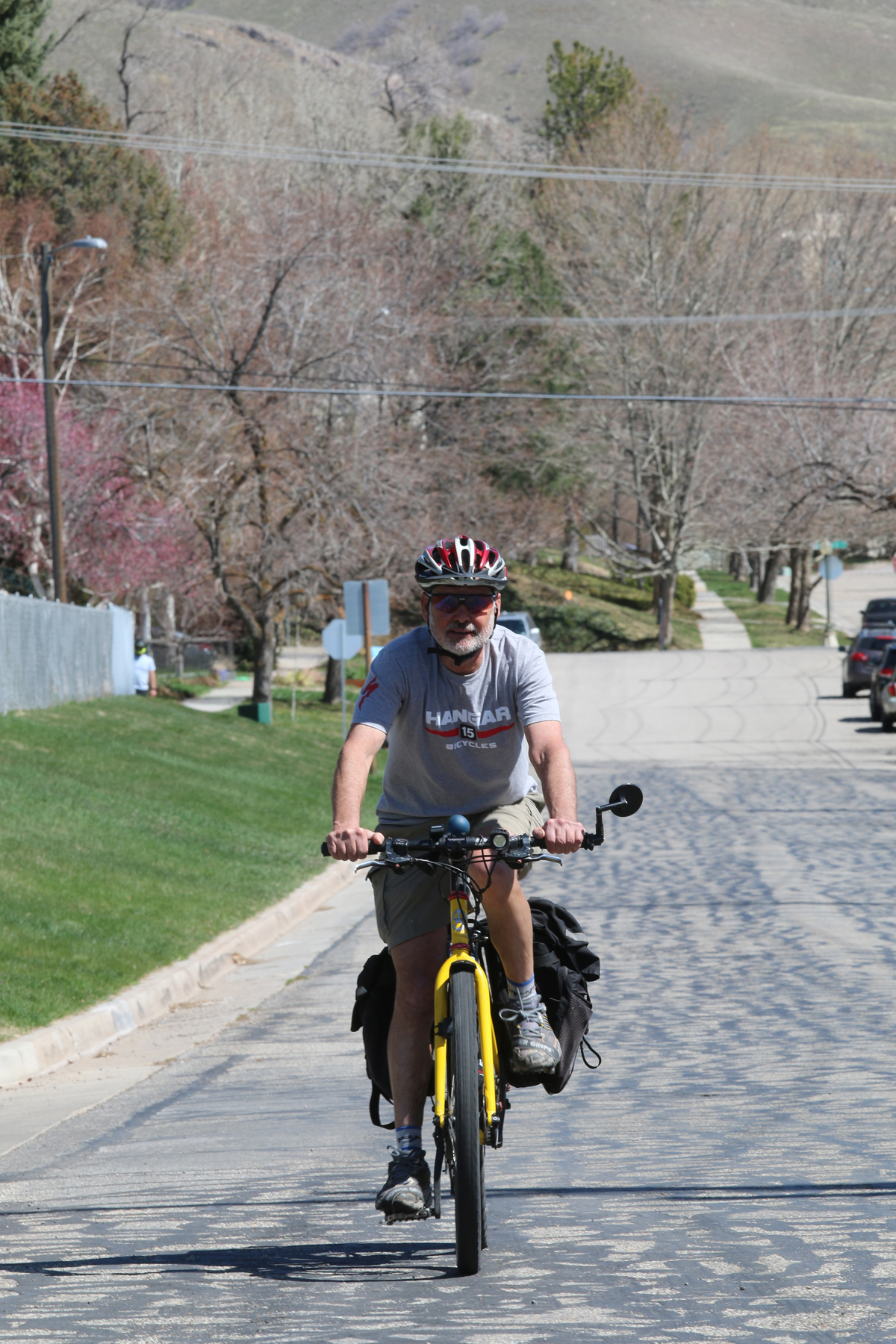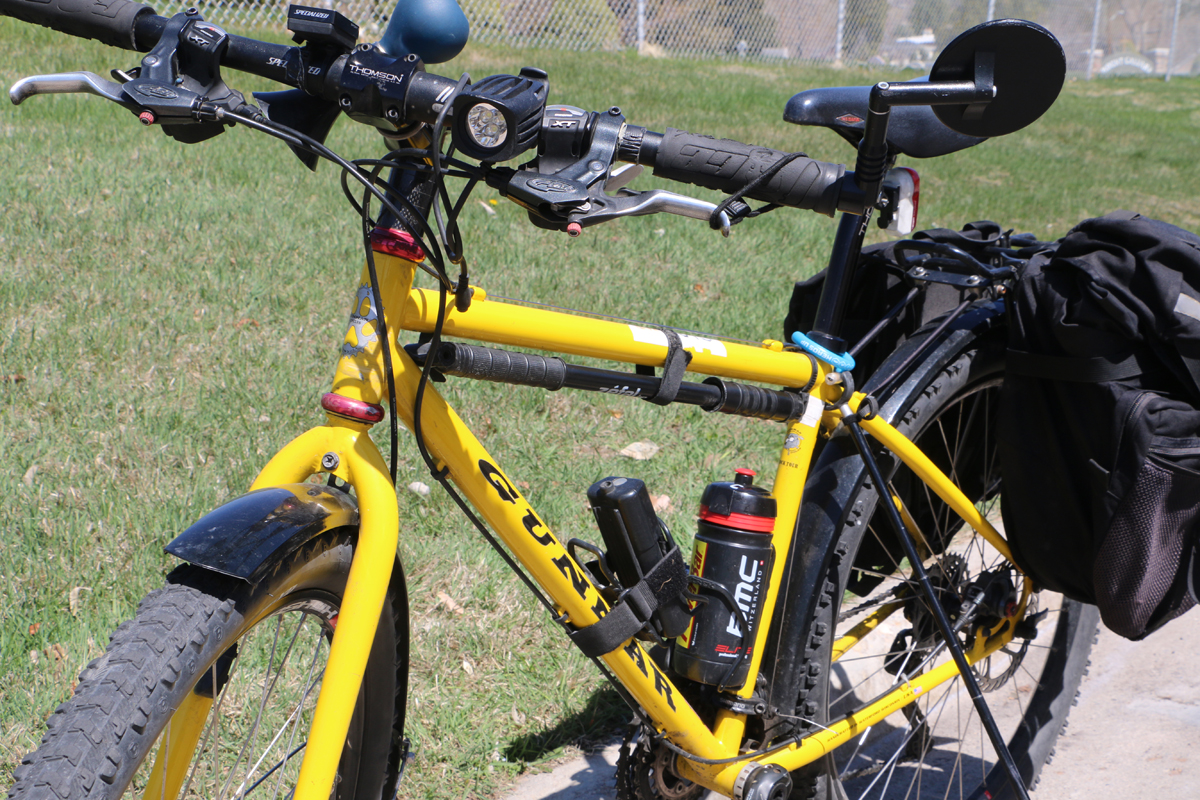Winter is officially over. The temperatures are warmer, the amount of daylight is longer each day and the chance of cold, snowy precipitation will dramatically lessen. Now is the perfect time to venture out on your bike to commute to work or wherever you need to be while leaving your car’s transmission in “park”.

If you have never commuted to work before there is anxiety and lots of questions. What bike do I ride, what clothes do I wear, and what route do I take are the most frequent of the questions. There are many answers to these questions with the caveat of “it depends”. Distance to work and weather considerations are a large part of “it depends”. Below is a general synopsis of what you need to know.
The Bike: For the April through October season, one could commute on any bike that is in good mechanical condition. One commuter I knew rode her high-end racing bike with carbon wheels for her 30-mile (round-trip) commute to her office. Once a week she drove to exchange her wardrobe for work and used a small backpack for needed daily items. I use a relatively heavy commuter bike built for me with a rear rack and fenders for my year-round commute to my volunteer job. My bike has lights, a mirror and a bell mimicking what my wife’s car has minus the air conditioning and all-wheel drive. I have a small repair kit including spare tubes and a pump/CO2 canister, a secure U-Lock and sometimes a second lock. My bike can fit different tire widths for summer and winter. With 15,000 miles of use the bike is still in great riding condition.

You can spend a wee bit or a large amount of cash for your commuter bike. If you ride year-round and put in a lot of additional miles, that expensive commuter becomes cheap as the parts work well and last long. An inexpensive bike that is carefully cared for will feel like hitting a lottery over time. In either case, the elimination of a car will save you over $8,000 according to American Automobile Association (AAA) nationwide averages.
There are some special circumstances you may want to consider for your commuter bike choice. If puncturevine (goat-heads) is prevalent on your intended route you may want to ask your Local Bike Shop (LBS) for tubeless tires with sealant. A pedal-assist E-bike will answer the frequent reasons for not commuting such as tight schedules, needing to travel to multiple sites during your work-day or simply the physical exertion of riding hills or long distances. Your Local Bike Shop may have a bike that will suit your needs as well as servicing your bike so that you are back on the road quickly.
There are many ways to carry what you need for your daily commute. There are a variety of bags that you wear on your back though can be hot in the summer. In part because I do all of my grocery shopping on my bike, a rear rack with large panniers is my choice. Front racks, baskets or platforms to place a small duffle bag have recently become a popular way of carrying stuff.
The Route: With Google Maps and other electronic aides, you should be able to find a good route suitable for biking to your job. Keep in mind that your commute should not be stressful, so find low speed & low traffic roads even if it means a slight increase in your commuting miles. Over time traffic will get used to seeing you, creating a more pleasant environment. You will also become acutely aware of every aspect of your route thus anticipating uneven surfaces, parked cars, hidden driveways and other potential annoyances.
Clothing: If you want to look good on the bike with clothing that is also suitable for the office, a recent Wall Street Journal article described clothing that is “made for the road-and ready to put in overtime at work”. The combo of jacket, shirt, pants and shoes featured in the article will set you back just over $800, but you will look good.
My advice, wear what is comfortable, practical and useful for your needs. I could not donate most of what I wear given the age and wear & tear of the clothing I ride in. For shoes I use old leather hiking boots in the winter for warmth and resistance to precipitation with lighter hiking shoes for other times of the year. In snowstorms or heavy rain I wear 2 old rain jackets as neither one alone does a good job of keeping me dry. However each jacket alone works well as a wind jacket to keep me warm.
Eventually you will find clothing that works for you. My one piece of (serious) advice is to pack a light jacket that has the specifications of being water resistant (or waterproof) in case your sunny spring day becomes wet.
Attitude: I have experienced over 100,000 miles of commuting miles strictly for the purpose of not using a car. Doing this requires a different attitude and mindset compared to the recreational miles I ride. I can’t say, “Oh I will wait until it cools off a bit to ride to work”. With the right attitude your commute to work will be successful.








